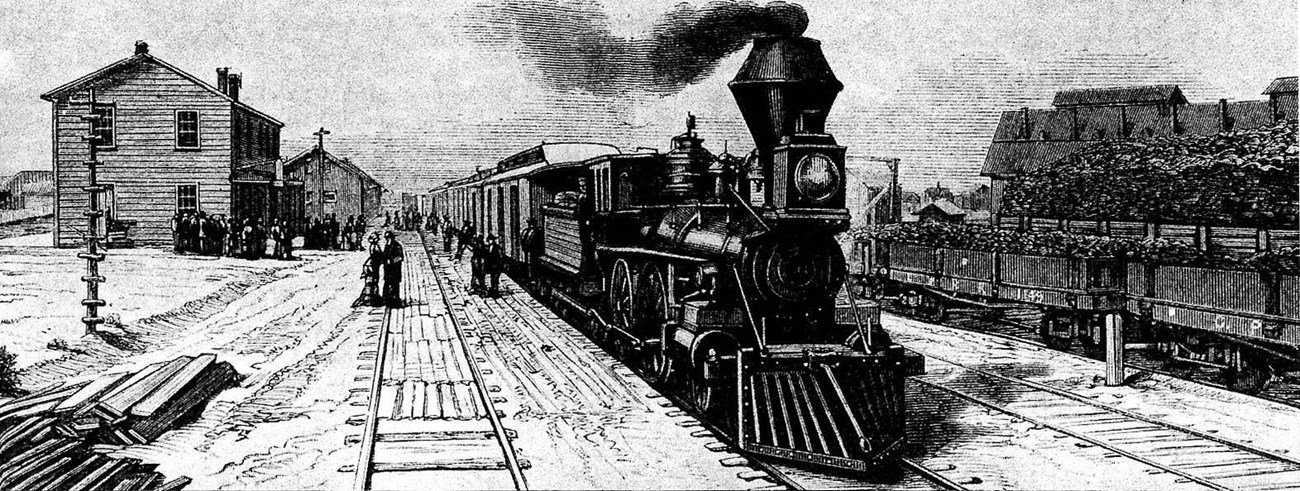
“The ‘frontier railroad’ was ephemeral,” wrote railroad historian Jim Wilkie, “only lasting a few years – until towns grew up along the line [and] eastern standards of good track and facilities were installed.” Along the transcontinental railroad, upgrades and improvements coincided with the building of more permanent stations, including Promontory Station, Utah, and the similar Battle Mountain Station, Nevada, shown above. Stations contained ticket and telegraph offices and, sometimes, eating rooms and hotels, while nearby were coal sheds, engine houses, and other facilities to service the traveler and the iron horse.
Promontory Station Late in 1869, the Union and Central Pacific railroads agreed to transfer the railroad junction from Promontory to Ogden; therfore, the Central Pacific became sole possessor of Promontory Station. At a wood framed building that served as a station, eating house, and hotel, transcontinental travelers waited while the locomotive’s tender was refilled with coal and water. A rail agent and telegraph operator worked at the station, as did the hotel operator and his family. During the 1870s, crews rebuilt the Promontory yard with a turntable to turn locomotives, a round house for engines, coal shed, water tank, and bunk houses. A Chinese section crew lived at Promontory in an isolated bunk house. They worked on the Promontory gravel train that repaired the track. “Helper” engines that pushed or pulled the transcontinental trains up the steep grade were kept at Promontory. The engineers, brakemen, and conductors driving such splendid locomotives as the “Jupiter” were the heroes of their day.
Community of Promontory Promontory Station was home for crews that worked on both tracks and trains. Workers came from various backgrounds and places. Midwesterners predominated, except for the track crews, which were Chinese. By the turn of the century, Italian and southern European immigrants replaced the Chinese as the section crews. Around the station, the sage covered landscape was at first cattle country. Large cattle firms such, such as those owned by Charles Crocker and his son George, shipped out stock from the cowpens at Promontory Station to San Francisco and Chicago markets. Early in the twentieth century, large tracts of land came under cultivation. Wheat farmers added farm houses, barns, and silos to the landscape. Promontory Station, with its one room school, mercantile, and post office, became a crossroads stop for farm families. Some of these familes still reside on the farmlands on the Promontory.
A Lasting Legacy With the abandonment of the railroad through Promontory Station, the rail yard, crew quarters, school, and the nearby businesses were vacated. But they have not disappeared. Near the last spike site, archeologists discovered and mapped the foundations of several original railroad facilities. The Promontory school house, where generations of children from farm and railroad families learned the three “Rs,” was moved to a nearby farm. Other structures or parts of them were reused on surrounding farms. With some searching, the legacy of Promontory Station can still be found. |
Last updated: April 29, 2025
